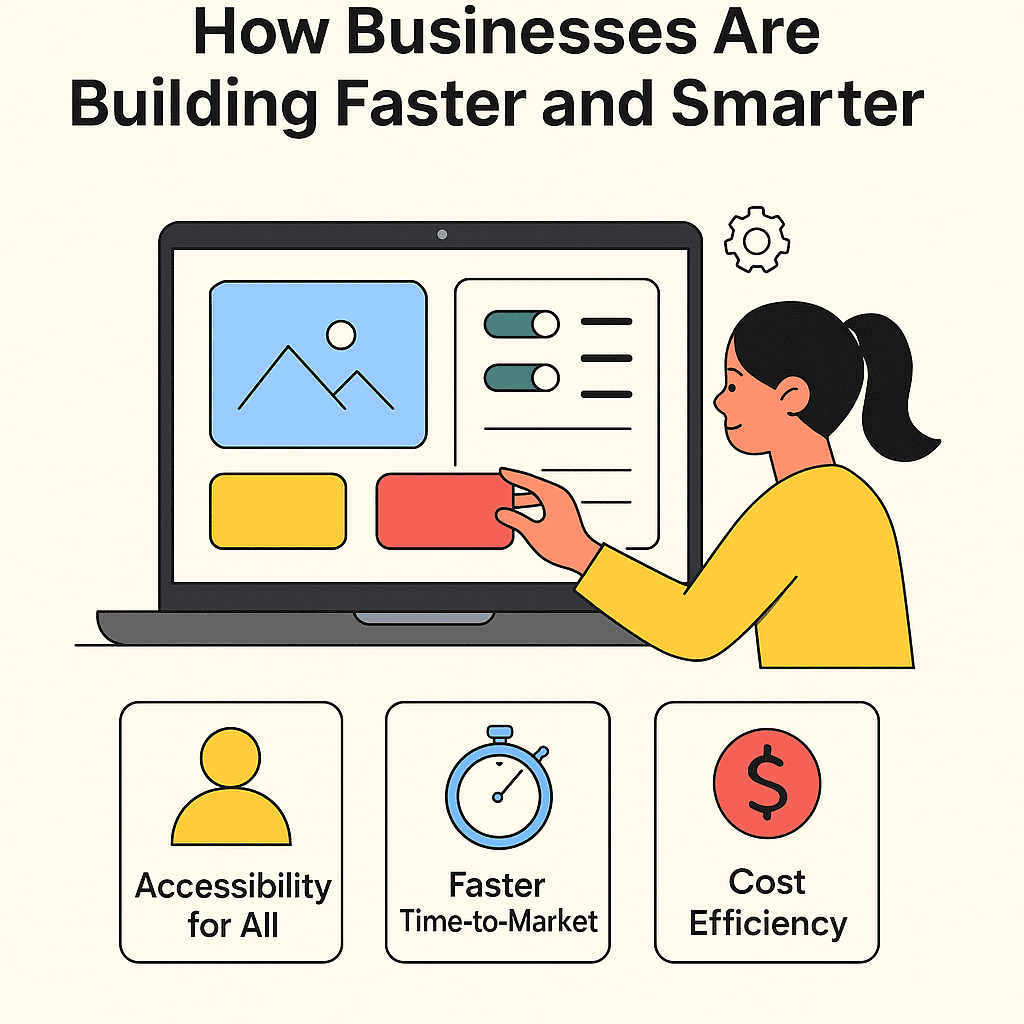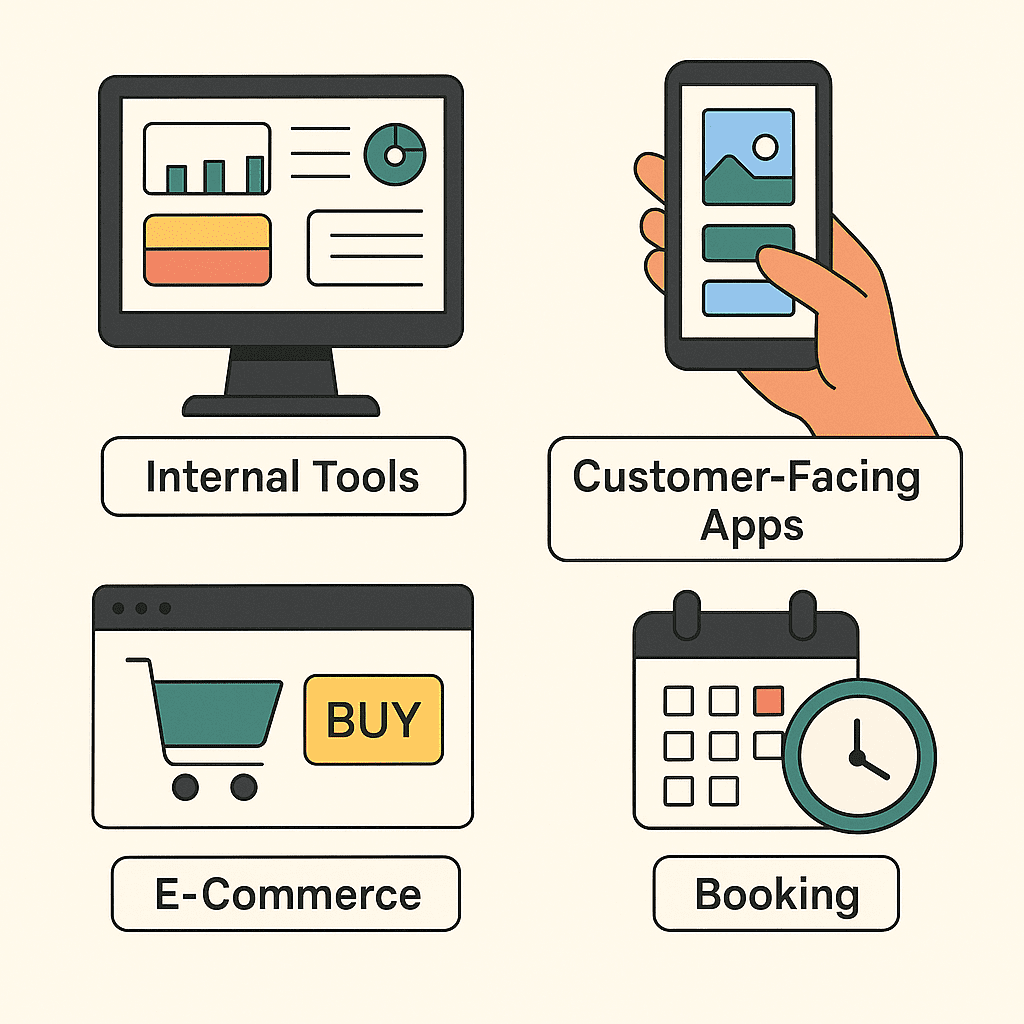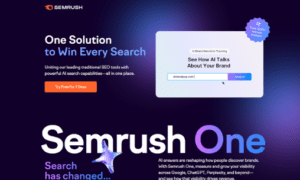The way we build technology is undergoinga profound shift. For years, digital products were created almost exclusively by developers, using complex programming languages and frameworks. This meant long timelines, expensive projects, and limited accessibility for non-technical professionals.
Now, things are changing. A new generation of no-code tools is empowering entrepreneurs, small business owners, and enterprise teams to design applications, automate workflows, and launch websites without writing a single line of code.
This isn’t a niche movement anymore—it’s a revolution that’s reshaping the digital economy.
Why No-Code is Transforming Industries
Accessibility for All
The most disruptive aspect of no-code is its inclusivity. Previously, only trained developers could bring digital ideas to life. Today, marketing specialists, HR managers, designers, and even solopreneurs can all build their own tools. With drag-and-drop interfaces, prebuilt templates, and integrations, the barriers to entry are lower than ever.
The democratization of software means innovation is no longer limited to IT departments. Anyone in an organization can become a problem-solver.
Faster Time-to-Market
In business, speed is a competitive advantage. Companies that adopt no-code drastically reduce the time between idea and execution. Instead of waiting months for development cycles, teams can launch prototypes in days, validate their assumptions, and pivot quickly if necessary.
This agility is particularly valuable for startups, where survival often depends on testing ideas before funding runs out.
Key Benefits for Businesses
Cost Efficiency
Hiring developers or contracting agencies can be costly, especially for small businesses. No-code platforms cut these expenses by enabling non-technical employees to handle much of the work themselves. While developers remain essential for complex projects, their time can now be focused on tasks that truly require coding expertise.
Flexibility and Innovation
The flexibility of no-code means experimentation is encouraged. Teams can test a new feature, gather user feedback, and make adjustments almost instantly. Instead of treating digital products as static, businesses can evolve them continuously—keeping pace with changing customer expectations.
Empowerment Across Departments
No-code also unlocks creativity in departments that previously relied on IT support. For example, an operations team can design its own workflow automation. A customer service team can build a FAQ chatbot. This empowerment reduces bottlenecks and boosts overall productivity.
Real-World Use Cases
Internal Tools and Automation
Companies use no-code platforms to build custom dashboards, CRMs, and automated workflows. These solutions eliminate manual data entry, streamline reporting, and provide real-time visibility across teams. What once took weeks of development can now be created by the very people who use the tools every day.
Customer-Facing Applications
No-code isn’t limited to internal processes. Many startups are launching e-commerce shops, mobile apps, and booking platforms entirely with visual builders. Restaurants, fitness trainers, and local shops can now go digital without hiring costly developers, creating new opportunities for growth and customer engagement.
Industry-Specific Solutions
Sectors like healthcare, finance, and education are also experimenting with no-code. From patient intake forms to budgeting dashboards and learning management systems, specialized solutions are being developed faster and with fewer resources.
Limitations to Keep in Mind
Scalability Concerns
While no-code platforms are powerful, they may not always handle the needs of large-scale applications. Performance issues can arise when user bases grow significantly, or when projects demand heavy customization.
Vendor Lock-In
Choosing a platform requires careful evaluation. Businesses must consider the long-term risks of being locked into a specific provider, as migrating to another tool later can be complex.
Security and Compliance
As with any digital solution, data protection and regulatory compliance must be addressed. Fortunately, leading no-code providers are increasingly integrating enterprise-grade security features.
The Future of No-Code
Artificial intelligence is set to push no-code even further. Imagine describing your idea in plain language and instantly receiving a functional prototype. This is not science fiction—it’s already beginning to happen.
For forward-looking companies, adopting no-code is more than a trend. It’s a strategic move to stay agile, reduce costs, and innovate faster. Businesses that embrace it today are positioning themselves as leaders in tomorrow’s digital economy.




































